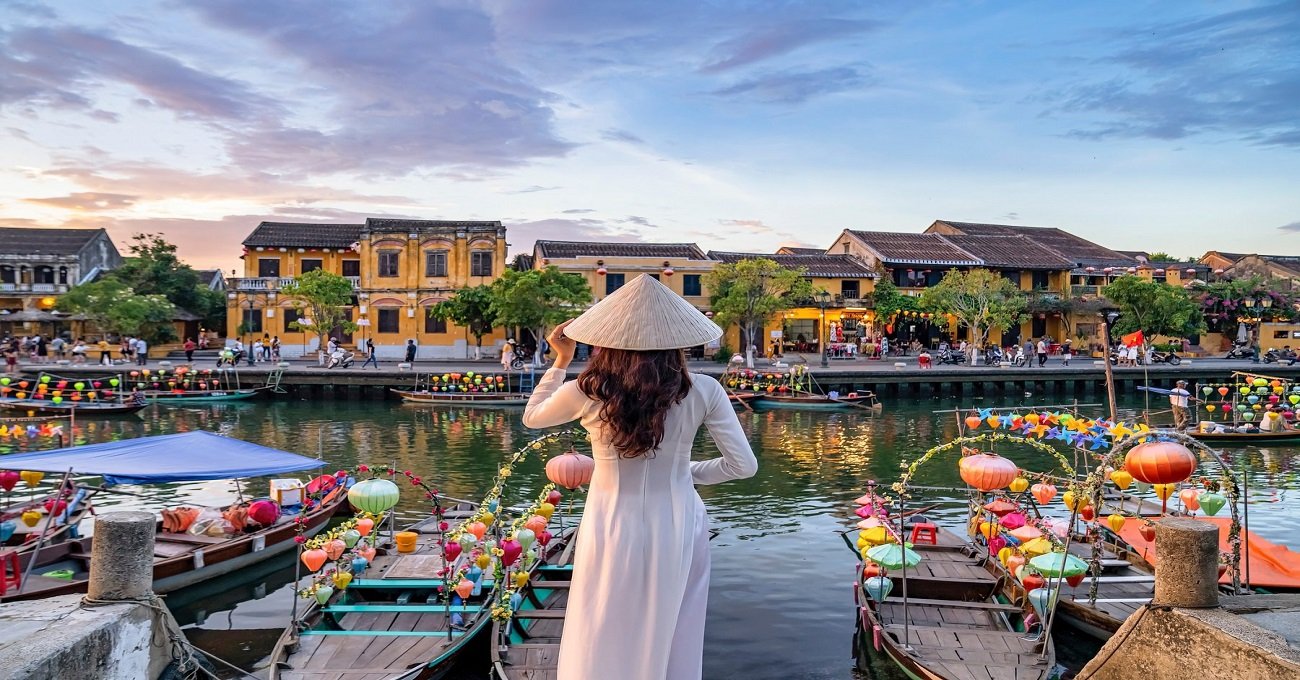How to Get from Ho Chi Minh City to Phnom Penh: Best Routes & Tips
Cross Borders with Ease – Your 2025 Guide Imagine starting your morning with a steaming cup of Vietnamese coffee in bustling Ho Chi Minh City, then […]
Plan your dream trip to Asia in minutes. Find and book hotels, flights, yacht rentals and car hire – from hidden gems to luxury escapes. Explore handpicked destinations, unique adventures and seamless travel options, all in one place.
Let’s find your Booking now !

Cross Borders with Ease – Your 2025 Guide Imagine starting your morning with a steaming cup of Vietnamese coffee in bustling Ho Chi Minh City, then […]

Travel Far, Worry Less — Why the Right Insurance Matters in Southeast Asia (2025) Dreaming of tropical beaches in Thailand, street food adventures in Vietnam, temple […]

Bali Car Rental Without Driver: Prices, Best Agencies & Tips (2025) Dreaming of exploring Bali at your own pace? Renting a car without a driver is […]

Wake Up to the Waves — Without Breaking the Bank Imagine opening your balcony doors each morning to golden sand, swaying palms, and the turquoise waters […]

Discover the Magic of Cambodia’s Temples at the Perfect Moment Few places on Earth capture the imagination quite like Cambodia’s ancient temples. Carved stone faces peering […]

10 Cheap Hotels Near Kyoto Station (Top Picks & Tips 2025) Looking for affordable accommodation close to Kyoto Station?Good news: staying near the station isn’t just […]

Discover Laos — Asia’s Timeless Hidden Gem in 2025 In 2025, while crowds rush to Thailand’s islands or Cambodia’s temples, a quieter, enchanting neighbor awaits the […]

Dive into Bangkok’s Magical Night Markets (2025) As the sun sets over Bangkok’s glittering skyline, the city transforms into a vibrant playground of lights, flavors, and […]

Best 2 Week Vietnam Itinerary: Complete Guide, Tips & Map (2025) Thinking of spending two weeks in Vietnam?Whether you’re dreaming of ancient temples, dramatic landscapes, or […]

Discover Thailand’s Secret Paradises in 2025 Imagine trading the crowded sands of Phuket and Phi Phi for untouched beaches where turquoise waters kiss powdery white shores, […]

Your Affordable Escape from Singapore to Bali Starts Here Imagine trading Singapore’s sleek skyline for Bali’s lush rice terraces, endless beaches, and sunrise volcano views — […]

Taste the Heart of Saigon in 2025 In Ho Chi Minh City — still affectionately called Saigon by locals — food isn’t just a meal; it’s […]

Find Your Inner Peace in Bali’s Best Yoga Retreats (2025) Imagine waking up to the sound of tropical birds, the scent of frangipani in the air, […]

Discover Bangkok’s Hidden Spiritual Gems in 2025 Bangkok dazzles millions each year with its majestic temples, golden spires, and intricate mosaics shimmering under the Thai sun. […]

Turn Your Layover into an Adventure Imagine this: you step off your flight at Changi Airport — consistently ranked the world’s best — and instead of […]

How to Travel Thailand on a Budget : Tips, Cheap Hotels & Transport Discover Thailand Without Emptying Your Wallet Dreaming of golden temples, island sunsets, and […]

Experience Japan’s Most Magical Season in 2025 Every spring, Japan transforms into a breathtaking canvas of delicate pink and white. Streets, parks, temples, and riversides bloom […]

When Seoul Shines Brightest — Discover Its Magical Nights (2025) By day, Seoul dazzles with ancient palaces, bustling markets, and café-lined streets. But when the sun […]

Your First 10 Days in Japan — Temples, Neon & Sushi Dreams Picture this: neon-lit nights in Tokyo’s Shibuya, morning prayers echoing through Kyoto’s golden temples, […]
Dive into Bangkok’s Magical Night Markets (2025) As the sun sets over Bangkok’s glittering skyline, the city transforms into a vibrant playground of lights, flavors, and hidden treasures. This is when Bangkok truly comes alive — in its legendary night markets. Imagine strolling past endless rows of colorful stalls, the scent of sizzling street food filling the air, and live music echoing under the neon glow. In 2025, Bangkok’s night markets remain a must-see for every traveler. Whether you’re hunting for vintage clothes, quirky souvenirs, handmade crafts, or simply the best mango sticky rice in town, there’s a market to match your vibe. This guide reveals the top 7 night markets in Bangkok you can’t miss in 2025 — from the iconic Chatuchak to the hipster vibes of Talad Rot Fai and hidden local gems. We’ll share what makes each […]
Coyot-Moderator 14 juillet 2025
Your Affordable Escape from Singapore to Bali Starts Here Imagine trading Singapore’s sleek skyline for Bali’s lush rice terraces, endless beaches, and sunrise volcano views — all for less than the price of a weekend dinner in the city. Sounds impossible? Think again! In 2025, cheap flights from Singapore to Bali are easier to find than ever — if you know where (and when) to look. With budget carriers, seasonal sales, and flight comparison hacks, that dreamy island escape can become a reality without emptying your wallet. Whether it’s a spontaneous long weekend in Seminyak, a spiritual yoga retreat in Ubud, or a surf trip to Canggu, getting there cheaply means you’ll have more to spend on what truly matters: fresh seafood by the sea, Balinese massages, and unforgettable experiences. In this guide, we’ll reveal the best booking windows, flight […]
Coyot-Moderator 8 juillet 2025
Taste the Heart of Saigon in 2025 In Ho Chi Minh City — still affectionately called Saigon by locals — food isn’t just a meal; it’s a thrilling journey through history, culture, and passion served on tiny plastic stools under neon lights. In 2025, the city’s vibrant street food scene continues to captivate travelers with bold flavors, sizzling woks, and the irresistible scent of fresh herbs drifting through lively alleyways. Whether it’s your first time in Vietnam or you’re a seasoned foodie, nothing beats wandering Saigon’s bustling streets after sunset, bowl of steaming pho in hand, and the hum of scooters in the background. Here, food stalls become social hubs where locals and travelers share stories over spicy noodle soups, grilled meats, and sweet treats. In this guide, discover the best street food in Ho Chi Minh City to try […]
Coyot-Moderator 13 juillet 2025
Discover the Magic of Cambodia’s Temples at the Perfect Moment Few places on Earth capture the imagination quite like Cambodia’s ancient temples. Carved stone faces peering through jungle mist, lotus-shaped towers glowing under sunrise skies — these are the moments travelers dream about. But timing is everything. Visit at the wrong season, and you may find yourself drenched in tropical downpours or fighting through crowds to glimpse Angkor Wat’s sunrise. In 2025, Cambodia remains a destination where history, spirituality, and nature blend seamlessly. Yet understanding when to go can transform your trip from simply memorable to truly magical. Imagine wandering quiet temple corridors under golden morning light, or exploring moss-covered ruins framed by blue skies — experiences shaped not only by place but by the season. In this guide, we’ll explore the best time to visit Cambodia’s temples like Angkor […]
Coyot-Moderator 8 juillet 2025
Travel to Laos : Ultimate guide Travel to Laos : Ultimate guide, a hidden gem nestled in the heart of Southeast Asia, offers a serene escape into a world of natural beauty and rich cultural heritage. Known for its laid-back atmosphere, breathtaking landscapes, and the warmth of its people, Laos is an ideal destination for travelers seeking an authentic experience. From the spiritual serenity of Luang Prabang to the unspoiled natural wonders dotting its countryside, Laos invites visitors to immerse themselves in a tranquil journey, steeped in tradition and simplicity. As you travel to Laos, prepare to be captivated by its unique charm, where time seems to slow down, allowing for a deep connection with its history, culture, and natural splendor. exploring the historical sites of laos Travel to Laos, steeped in history, is home to remarkable sites […]
Coyot-Moderator 11 juin 2024
Travel to Hong Kong : Ultimate guide Travel to Hong Kong : Ultimate guide, a dazzling cosmopolitan city where East meets West, offers an exhilarating blend of modern skyscrapers, traditional culture, and renowned culinary delights. Known for its iconic skyline, bustling markets, and lush green spaces, Hong Kong is a world-class destination that captivates visitors with its unique charm and dynamism. As you travel to Hong Kong, get ready to explore a city that is not only a global financial hub but also a melting pot of cultures, offering a rich tapestry of experiences from its neon-lit streets to its tranquil temples. Whether you're seeking urban adventures, cultural explorations, or culinary journeys, Hong Kong promises an unforgettable experience. exploring hong kong's iconic skyline Travel to Hong Kong : the skyline is a spectacular tapestry of architectural marvels, symbolizing the […]
Coyot-Moderator 18 juin 2024
Travel to Cambodia : Ultimate guide Travel to Cambodia : Ultimate guide, a land steeped in ancient mystique and rich cultural heritage, beckons travelers with its unique blend of historical grandeur and natural beauty. Known for the magnificent Angkor Wat and its enchanting ruins, this Southeast Asian nation offers a journey through time, where millennia-old temples coexist with vibrant modern life. As you plan your travel to Cambodia, prepare to be captivated not just by its archaeological wonders but also by its lush landscapes, bustling cities, and the warm spirit of its people. Cambodia is a destination that promises not only a visual feast but also a profound connection with history and culture. Cambodia's ancient wonders Travel to Cambodia, is renowned for its ancient architectural wonders, most notably the awe-inspiring Angkor Wat. This temple complex, the largest religious […]
Coyot-Moderator 16 juin 2024
Travel to Kuala lumpur : Ultimate guide Travel to Kuala lumpur : Ultimate guide, the vibrant capital of Malaysia, is a city where ancient rainforests meet […]
Coyot-Moderator 25 juin 2024
Travel to Singapore : Ultimate guide Travel to Singapore : Ultimate guide, a bustling metropolis nestled at the crossroads of East and West, is a compelling […]
Coyot-Moderator 24 juin 2024
Travel to Sri lanka : Ultimate guide Travel to Sri lanka : Ultimate guide, an island nation in the Indian Ocean, offers an enchanting blend of […]
Coyot-Moderator 1 juillet 2024
Travel to Ha long bay : Ultimate guide Travel to Ha long bay : Ultimate guide, a UNESCO World Heritage Site in Vietnam, is a mesmerizing […]
Coyot-Moderator 26 juin 2023
Travel to Ho Chi Minh : Ultimate guide Travel to Ho Chi Minh : Ultimate guide, formerly known as Saigon, stands as a beacon of rapid […]
Coyot-Moderator 26 juin 2023
Maldives Vacation : Ultimate guide Dreaming of crystal-clear turquoise waters, powdery white sand beaches, and luxurious overwater bungalows? A Maldives vacation is the epitome of tropical […]
Coyot-Moderator 21 avril 2025
Travel to Dubai : Ultimate guide Travel to Dubai : Ultimate guide, a city that rose from the desert sands to become one of the most […]
Coyot-Moderator 20 juillet 2024
Travel to South Korea : Ultimate guide Travel to South Korea : Ultimate guide, offers an enchanting blend of age-old traditions and contemporary innovations. This dynamic […]
Coyot-Moderator 19 juin 2024
Stay in loop ! you’ll receive the best promotions from our partners around Asian Countries !
Are you ready to trade the everyday for extraordinary experiences? This travel blog is your one-stop shop for crafting the perfect summer escape.
Contact us : info@coyotrip.com
Please login or subscribe to continue.
No account? Register | Lost password
✖Are you sure you want to cancel your subscription? You will lose your Premium access and stored playlists.
✖